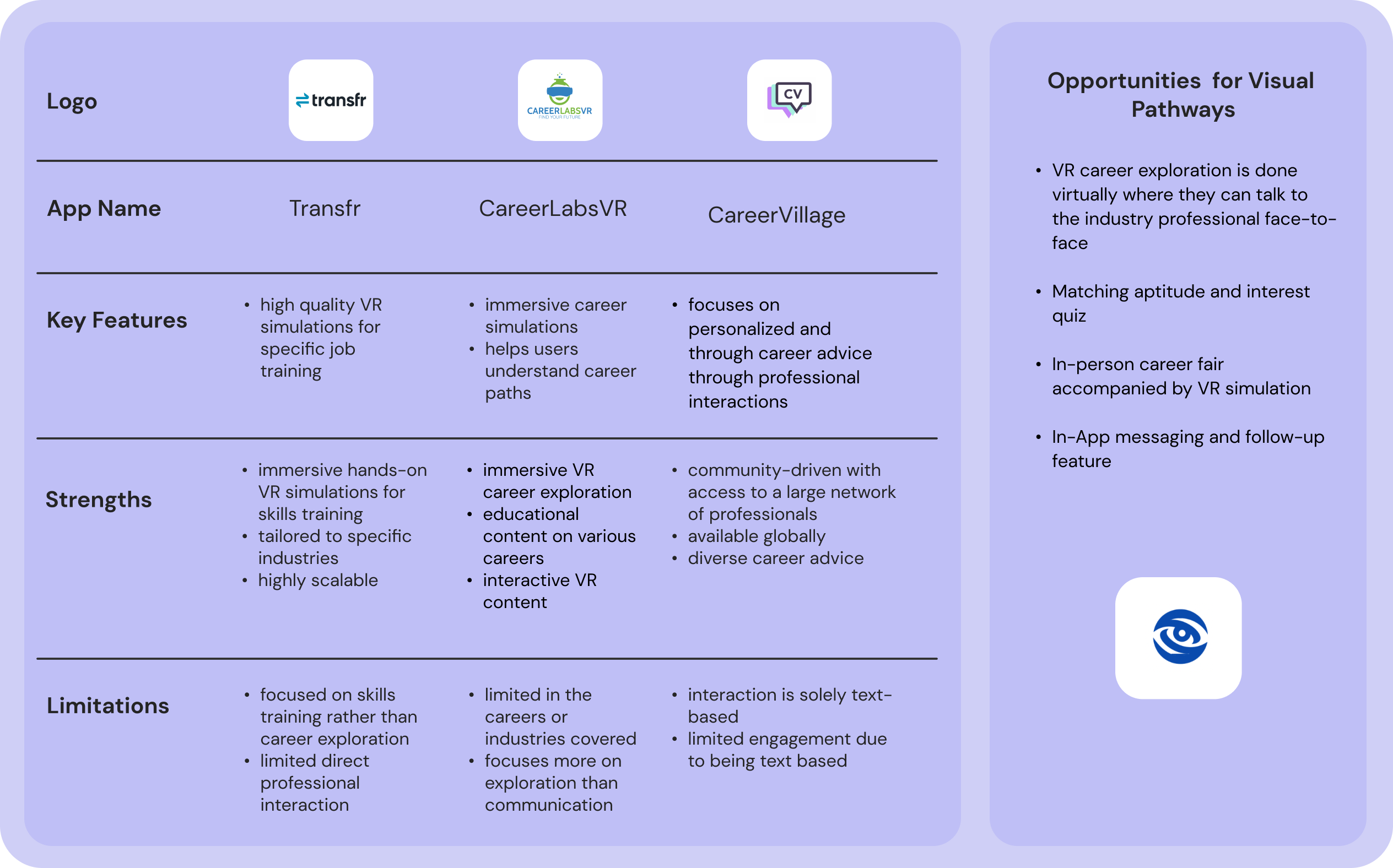
user research results
we learned there are 3 common themes that matter to both parties : organization, co-location and technical skills and interest
“In my high school career fair… lines were really long. There wasn’t a lot of time to have 1:1 conversations with any of the professionals." - Fiona (UCSD Undergraduate)
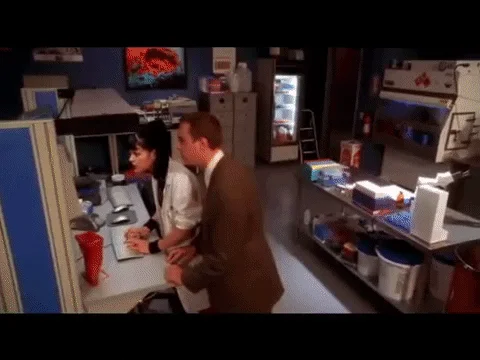
“I think having the option to do both [shadowing in person and VR] would be awesome, but I think it’s crucial to be able to do it [shadowing] in person.” - Taj (HS Senior)
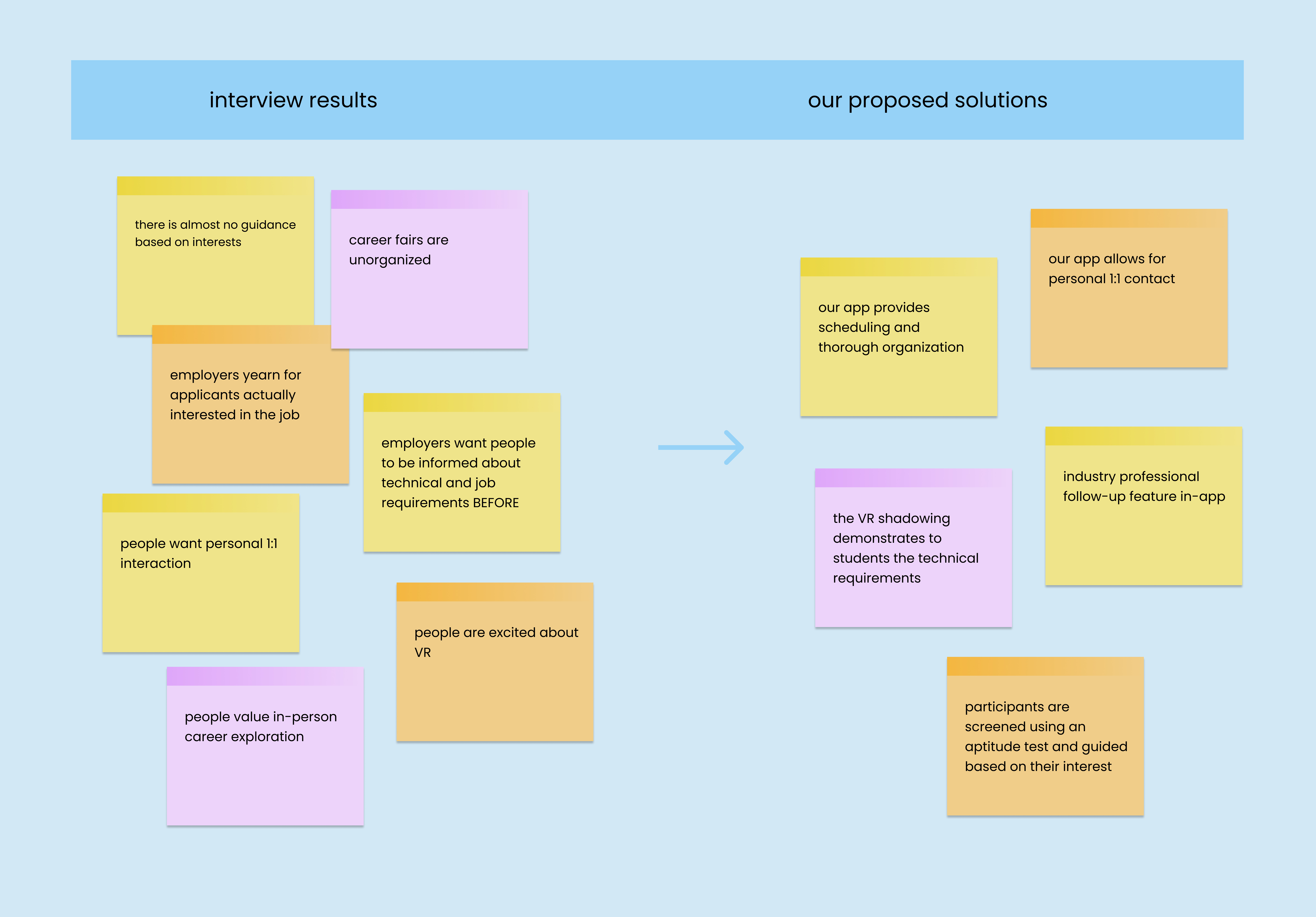
our design process
Using what we learned we created a user flow and lo-fi sketches for the app portion of our product
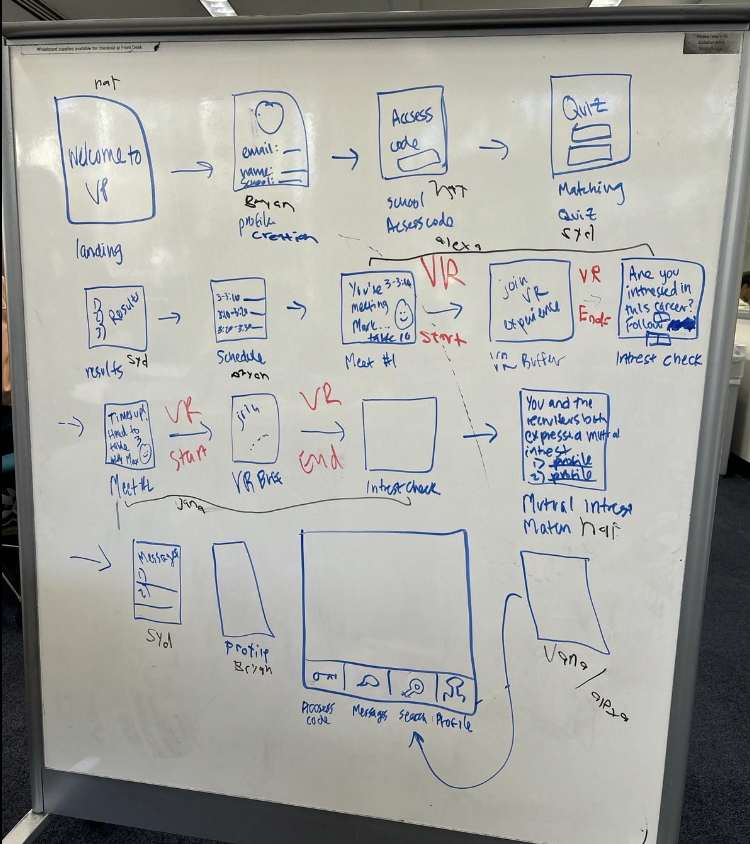

second iteration of prototyping
incorporating feedback
- In prototype 1, we were limited to careers that already has VR demo videos. For Prototype 2, we changed the careers to be more relevant because we no longer prorotypes the VR experience as a video, but rather as an interaction
👥 career options are not relevant👔🔍
🥽 VR experience lacked interaction👔🔍
- Our first prototype had the VR demos as an independent task. This excluded recruiters from being able to interact with the students as they went along the demo. For our second prototype, we had students and recruiters enter the VR environment together to complete the aptitude tasks
💻make beneficial for recruiters👔🔍
- Our first prototype was not obviously beneficial to the recruiters. For our second prototype, we had recruiters using VR to complete the aptitude tasks and also had the recruiters select their standout students at the end. This enables recruiters to actually find people interested in the field and showing early talent.
👥 career options are not relevant
• In prototype 1, we were limited to careers that already has VR demo videos. For prototype 2, we changed the careers to be more relevant because we no longer chose to pttotope the VR experience as a video, but rather as an interaction.
🥽 VR experience lacked interaction
• Our first prototype had the VR demos as an independent task. This excluded recruiters from being able to interact with the students as they went along the demo. For our second prototype, we had students and recruiters enter the VR environment together to complete the aptitude tasks.
💻make beneficial for recruiters
• Our first prototype was not beneficial to the "recruiters" in our demo. Therefore, for our second prototype we played as the recruiters
(those that would be on the VR headset) and created aptitude tasks relating to each profession where the students would participate and and at the end had the recruiters select their standout students at the end. This enables recruiters to actually find people interested in the field and showing early talent.
final prototype
Our final product after our prototyping session with the career fair set as our social setting

Account and Room Code Set Up
Our product is designed to be used during social settings like career fairs hosted by high schools. The first step for the student is to join their school's fair using a private key code.
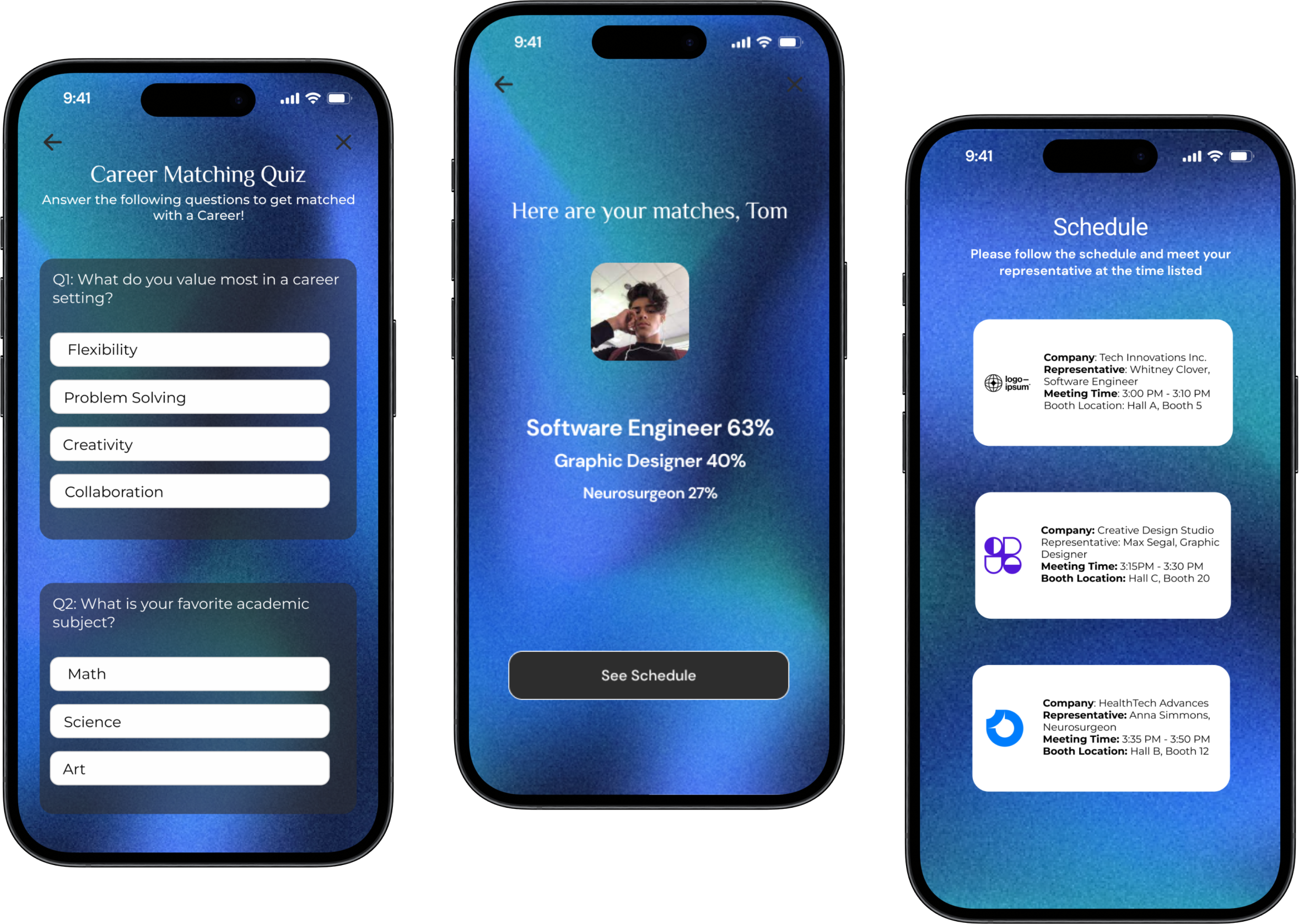
Career Quiz + Matching
After they join their room, they are prompted to take a career matching quiz that gauges their interests. They are then shown their top 3 career matches and this creates a schedule for them that they then follow in-person at the career fair.
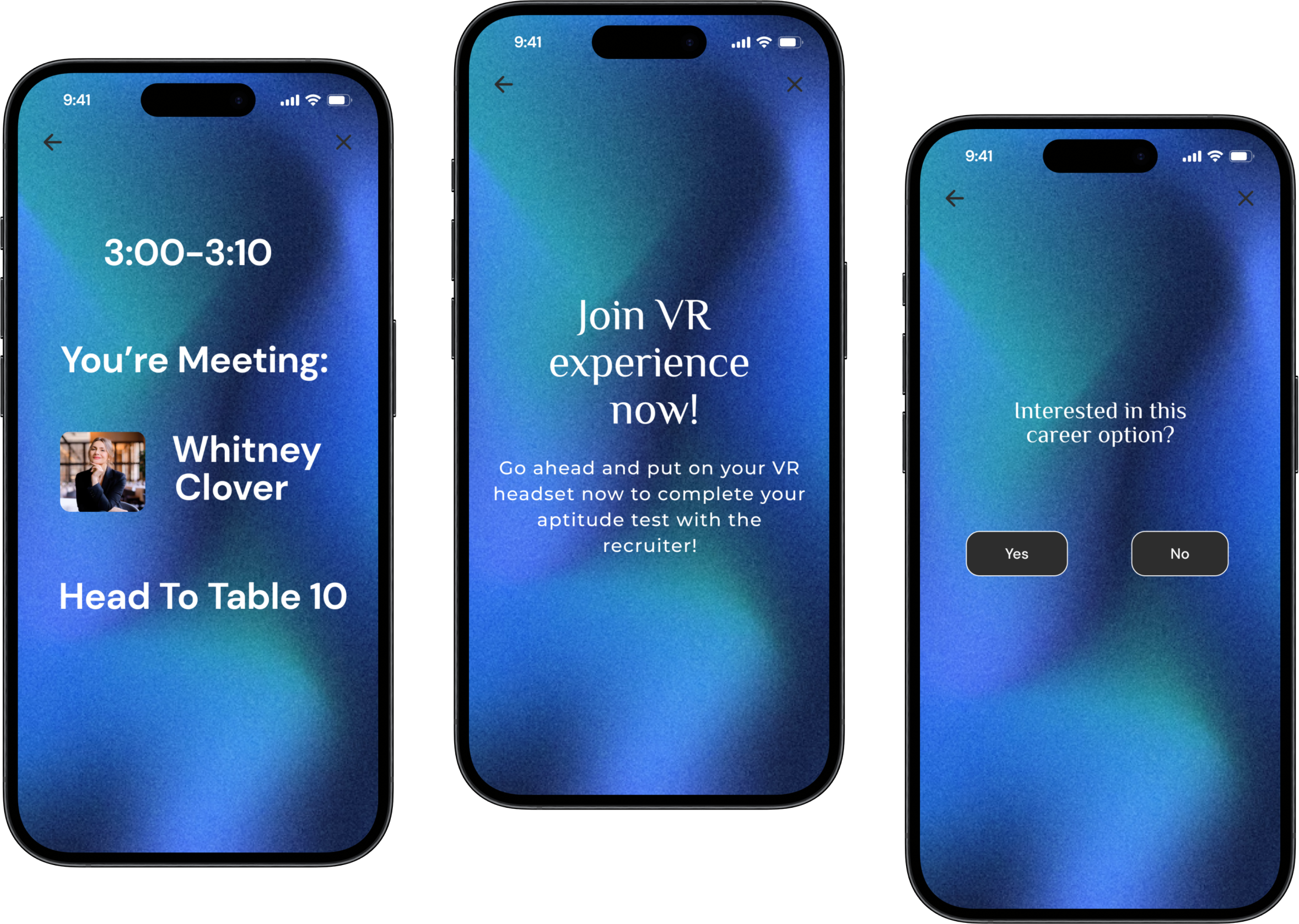
In-Person and VR Engagement
As they go through their curated schedule they follow the steps prompted through the app and engage in both VR and in-person engagement. This process gets repeated as they go through all three recruiter experiences.
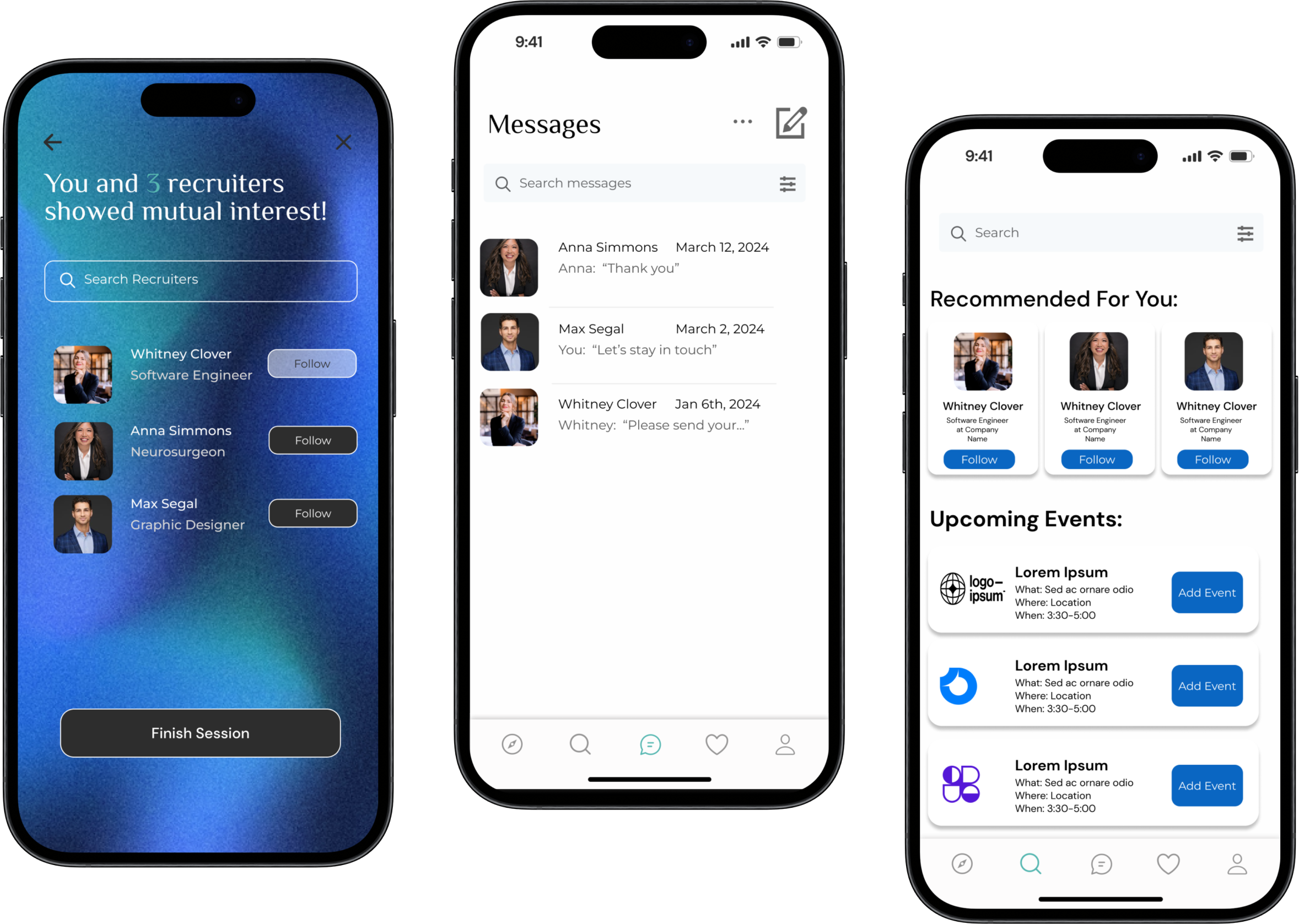
Recruiter Follow-Ups
Another part of our mission was for this process to be equally beneficial for the recruiter so after the meetings the recruiter can show mutual interest in the candidate and this allows them to follow each other.






